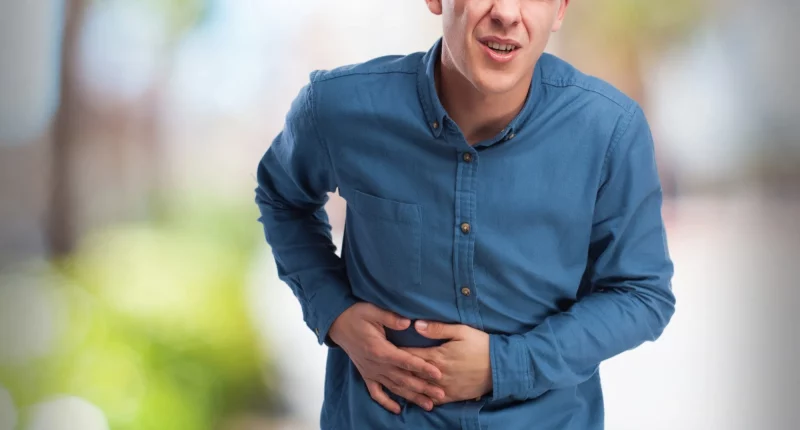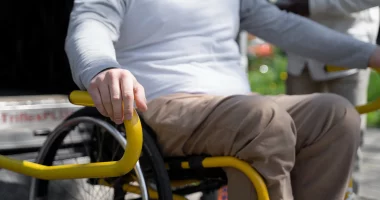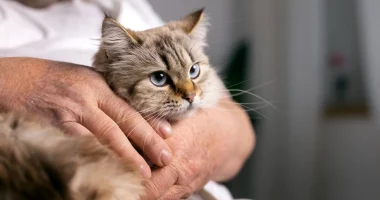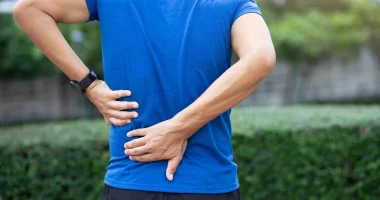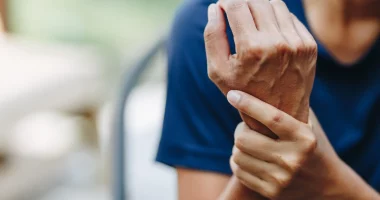Cholelithiasis, also known as gallstones, develops when the balance of substances in bile, a digestive fluid in the gallbladder, gets disrupted. They are common, impacting about 25 million individuals in the United States.
Gallstones are small, hard pieces that form in the gallbladder. They can look like little pebbles and are usually made from either bilirubin or cholesterol, a substance that comes from the breakdown of red blood cells. Gallstones can vary in size from as small as a grain of sand to as large as a golf ball. They may occur individually or in groups. When they cause problems, they can lead to a painful condition called a gallbladder attack.
Types
Cholesterol Stones
These stones form when there is too much bilirubin or cholesterol in the bile and not sufficient bile salts. They can also develop if the gallbladder doesn’t empty properly during digestion. Cholesterol stones are typically yellow-green and are the common kind of gallstone.
Pigment Stones
Pigment stones are linked to certain health conditions like cirrhosis, infections in the bile ducts, or inherited blood disorders such as sickle cell anemia. These conditions lead to an excess of bilirubin, leading to pigment stones, which are typically black or dark brown.
Symptoms
Gallstones often do not cause any symptoms, so many individuals may have them without realizing it. In fact, most individuals with gallstones remain symptom-free.
However, if gallstones move into and obstruct the ducts of the biliary tract, they can cause various symptoms. These may include sharp, sudden pain in the upper right side of the abdomen, just below the ribs. This pain can be severe and may last from a few minutes to many hours. It may also radiate to the upper back or right shoulder. Other symptoms can include fever, nausea, vomiting, jaundice, chills, abdominal bloating, burping, gas, indigestion, and difficulty tolerating fatty foods.
When gallstones block the bile ducts and cause these symptoms, it is often referred to as a gallbladder attack or a biliary colic.
Causes
Gallstones form in the biliary tract, which is the pathway connecting the pancreas and liver to the small intestine. The gallbladder, a tiny, pear-figured organ located under the liver on the right upper of the body, is part of this tract. Its primary function is to reserve bile, a digestive fluid created by the liver that helps break down fats and fat-soluble vitamins.
After consuming fatty foods, the gallbladder releases and contracts stored bile in the common bile duct, which then transports the bile to the small intestine to aid in digestion. Bile is prepared of bile salts, fats, cholesterol, water, proteins, and bilirubin. Bile salts help digest fats, while bilirubin gives bile its yellow-green color and contributes to the brown color of stools.
Gallstones may form when fluid in the gallbladder becomes too concentrated and hardens into stone-like formations. This can occur if there is an excess of cholesterol, bile salts, or bilirubin.
Several factors are linked with an increased risk of developing it. These include obesity, lack of physical exercise, refined carbohydrates and high-fat diets, tobacco use, and a genetic predisposition to the condition.
Complications
While it is uncommon, gallstones can lead to complications such as an infection of the gallbladder, known as cholecystitis. This can happen when gallstones block the bile duct, causing bile to become trapped in the gallbladder and leading to a bacterial infection.
Symptoms of a gallbladder infection include serious abdominal pain that can last for many hours, a sick feeling of stomach, vomiting, jaundice, and fever. Other signs can include light-colored stools and abdominal bloating.
If you suspect you have an infected gallbladder, it is important to get medical attention immediately. Contact your doctor or go to an emergency room to get the appropriate care.
Diagnosis
To diagnose gallstones, doctors use several types of tests. Initially, blood examinations may be conducted to check for signs of inflammation or infection, but these tests do not detect gallstones directly.
The primary method for diagnosing gallstones is through imaging tests. Ultrasound is typically the first test performed, as it is effective at detecting the presence. In some cases, if further detail is needed, magnetic resonance imaging or computerized tomography scans may also be used to get a clearer view of the gallstones and their impact on surrounding structures.
Prevention and Lifestyle
While it might not be possible to completely reduce gallstones, you can decrease your risk by adopting a healthy lifestyle, including a balanced diet and regular physical activity.
To support gallbladder health, focus on eating high-fiber foods. These include fruits and vegetables, peas, beans, lentils, and whole grains like oats, brown rice, whole wheat bread, and whole grain pasta.
Avoid foods that can increase your risk of gallstones, like refined sugar, carbohydrates, and unhealthy fats. This means limiting fried foods, processed meats, pastries, butter, and sweets. Rather, opt for healthy fats, like those found in seeds, nuts, fatty fish, avocados, and olive oil.
Treatment
Gallstone treatment is recommended only if you experience symptoms. If you have a gallbladder attack, it’s important to contact your doctor. Even if the symptoms subside, they may return and require treatment.
In many cases, surgery is a common and effective treatment. There are two main types of surgical procedures:
- Laparoscopic Cholecystectomy: This is a minimally invasive surgery where a small cut is made, and a laparoscope is used to eliminate the gallbladder. This procedure is usually performed on an outpatient basis. Recovery typically takes around 7 days.
- Open Cholecystectomy: If the gallbladder is seriously scarred, infected, or inflamed a larger cut in the abdomen may be necessary to eliminate it. This surgery is done in a surgery room, and you might be required to reamin in the hospital for up to 7 days. Full recovery to resume normal activities typically takes about a month.
After the gallbladder is eliminated, bile flows straightly into the duodenum (the first area of the small intestine) rather than being reserved in the gallbladder.
In some episodes, nonsurgical treatments may be considered, particularly when surgery is not an option. These treatments can be utilized to break up or eliminate gallstones from cholesterol.
- Endoscopic Retrograde Cholangiopancreatography: This procedure combines X-rays and upper gastrointestinal endoscopy to eliminate gallstones that are inserted in the bile duct.
- Oral Dissolution Therapy: Medications containing bile acids, like Actigall and Chenix, can be used to break up tiny cholesterol stones. This treatment can take several months or even years to be effective, and not everyone is a suitable candidate.
- Shock Wave Lithotripsy: This procedure uses shock waves to break gallstones into small pieces that can then be eliminated from the body through urine. It is not commonly utilized and is only certain for medicating cholesterol stones.
Summary
Gallstones are hard deposits in the gallbladder that can cause pain and complications if they block bile ducts. They are typically diagnosed using ultrasound, MRI, or CT scans. Treatment is usually recommended only if symptoms are present and often involves surgery. The two main surgical options are laparoscopic cholecystectomy, a minimally invasive procedure, and open cholecystectomy for more severe cases. Nonsurgical treatments, such as ERCP, oral dissolution therapy, and shock wave lithotripsy, may be used if surgery is not possible. After gallbladder removal, bile flows directly into the small intestine.
External links
